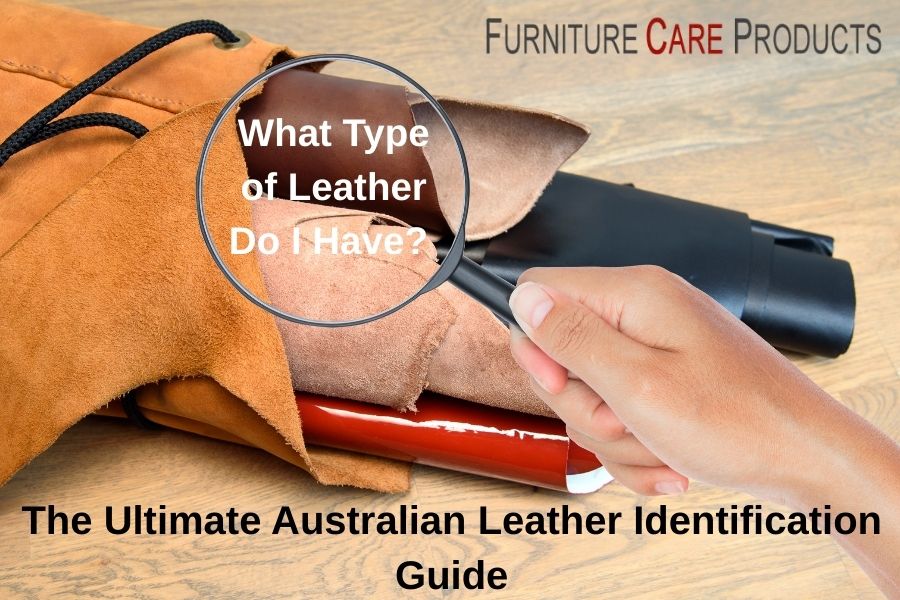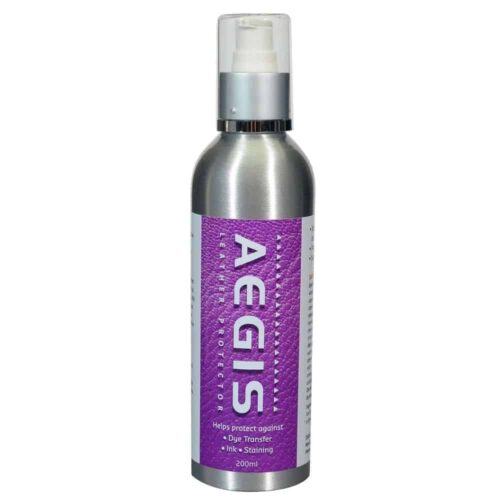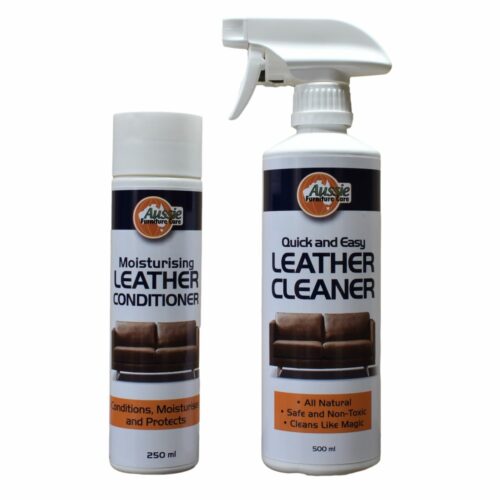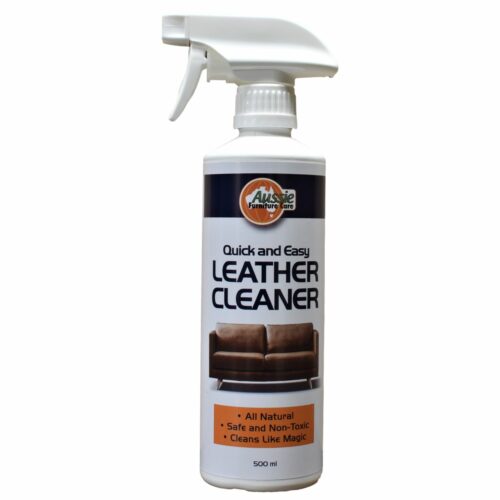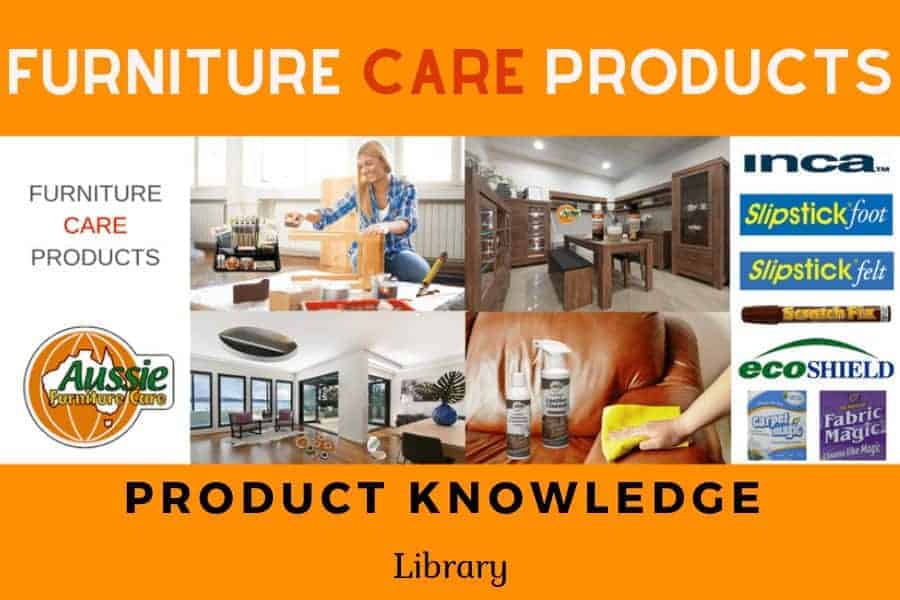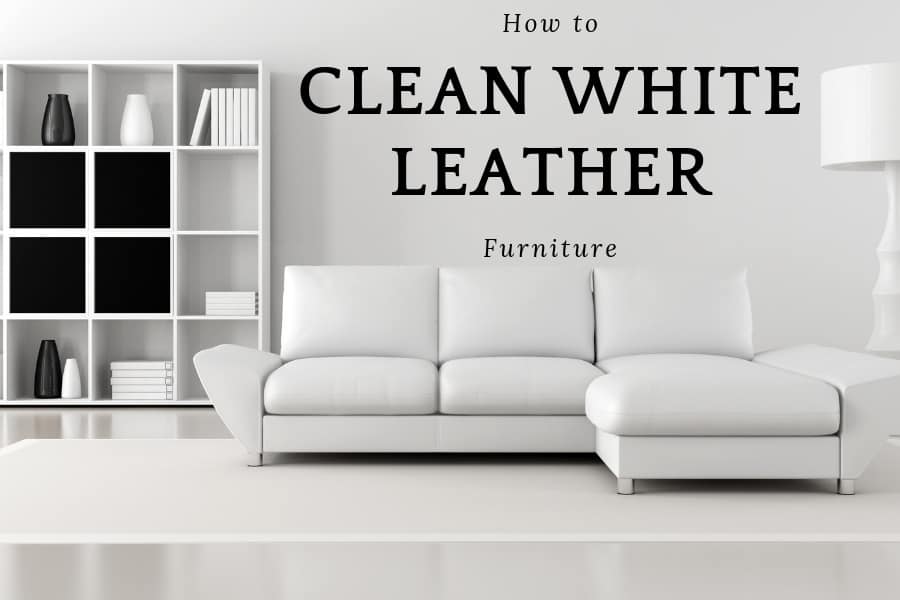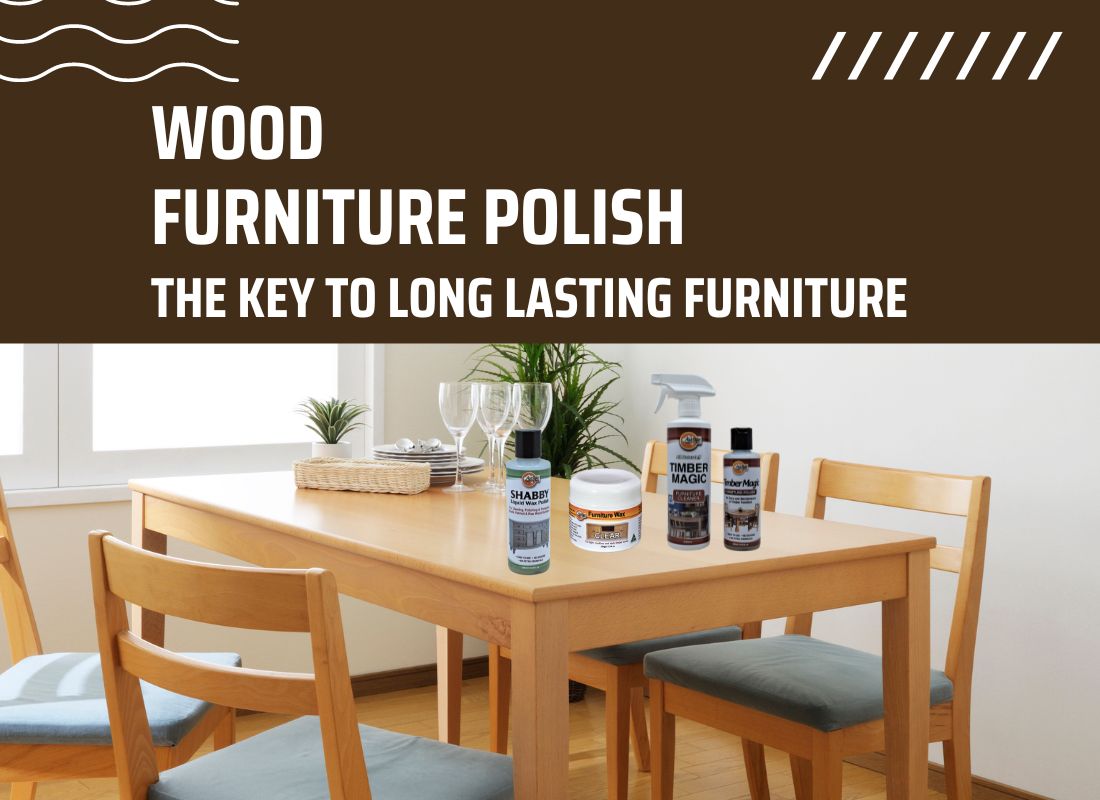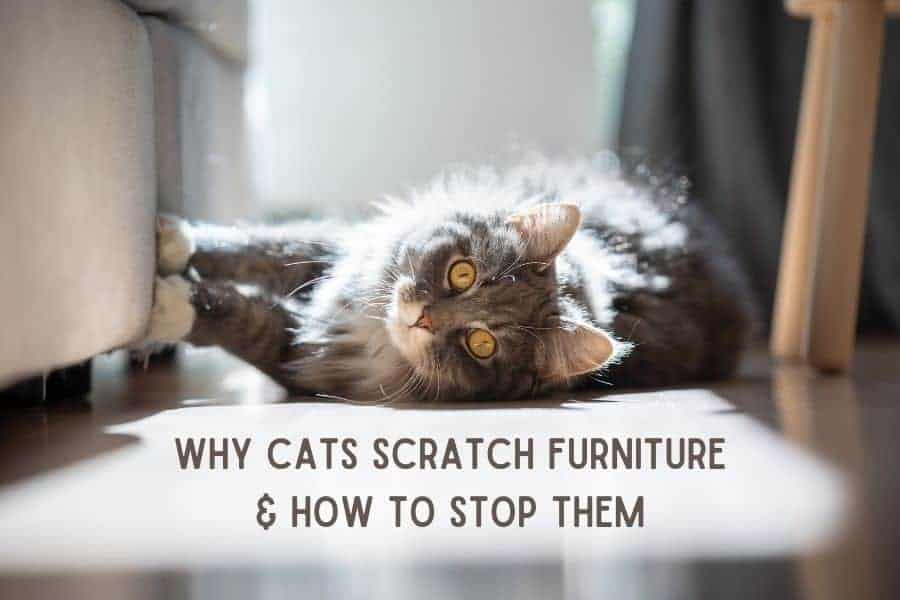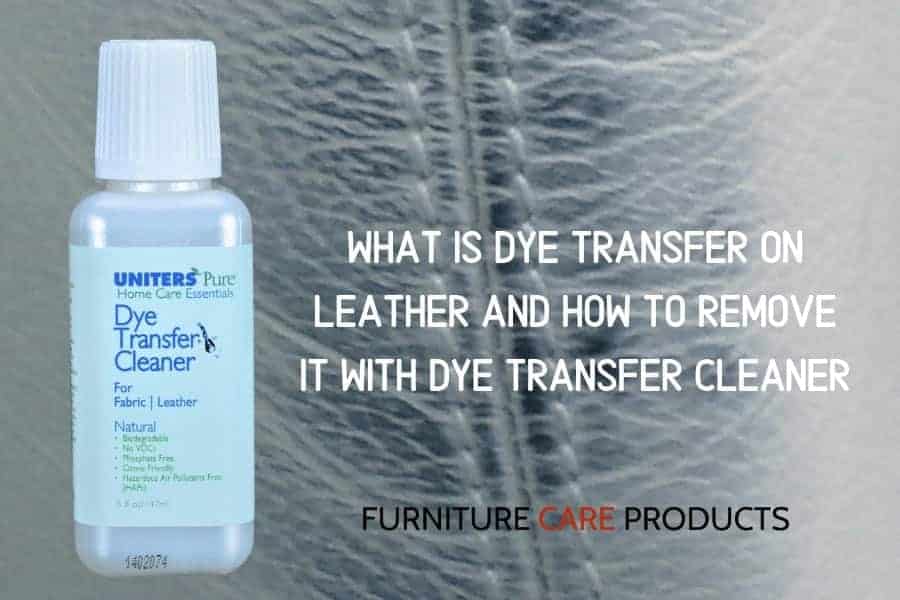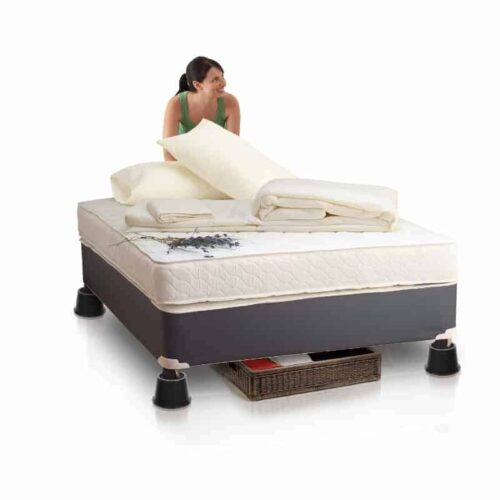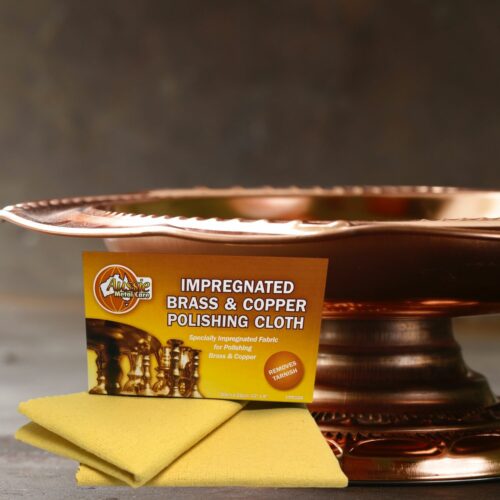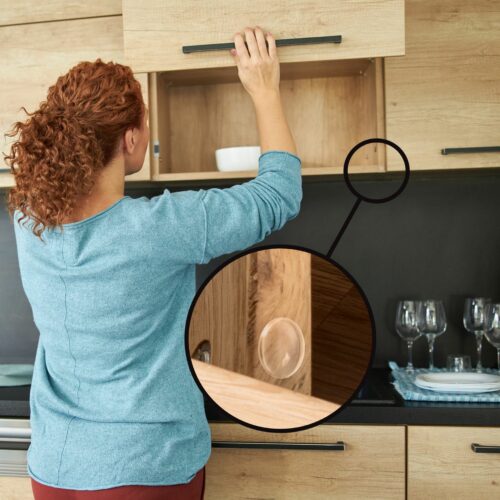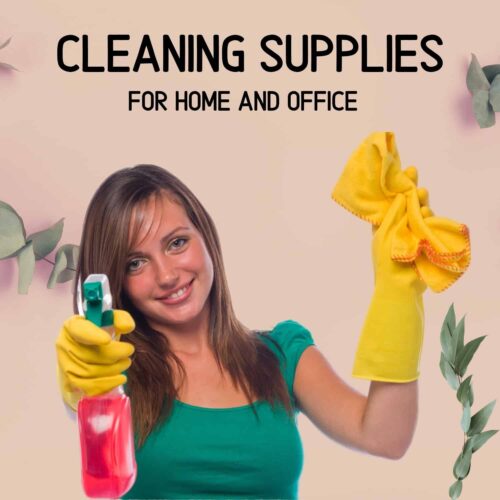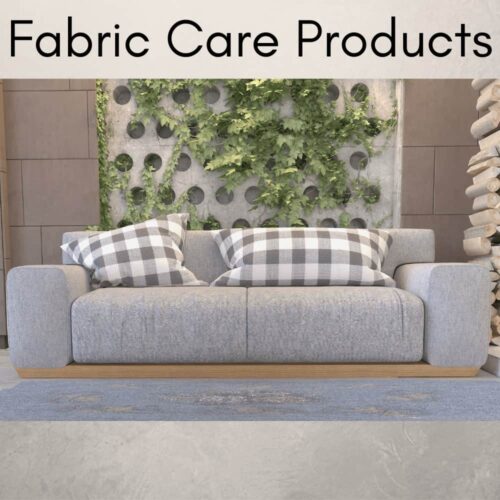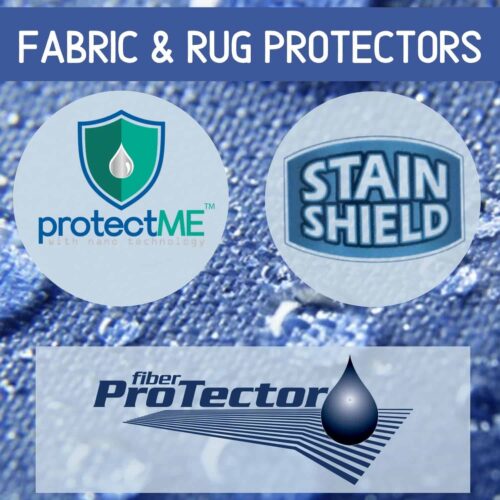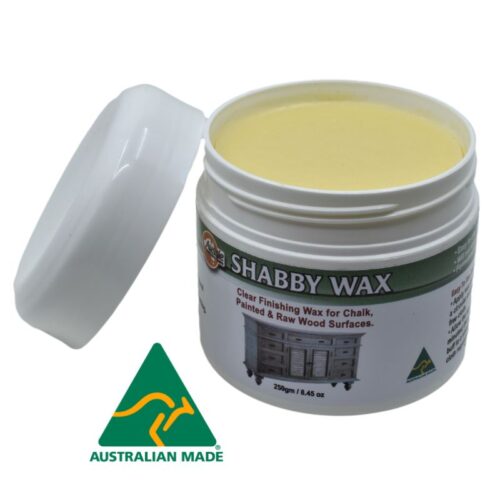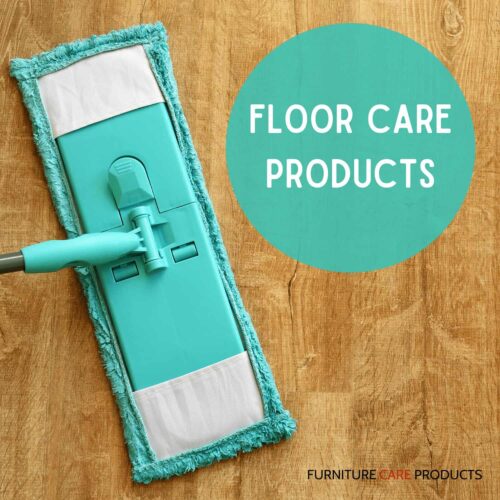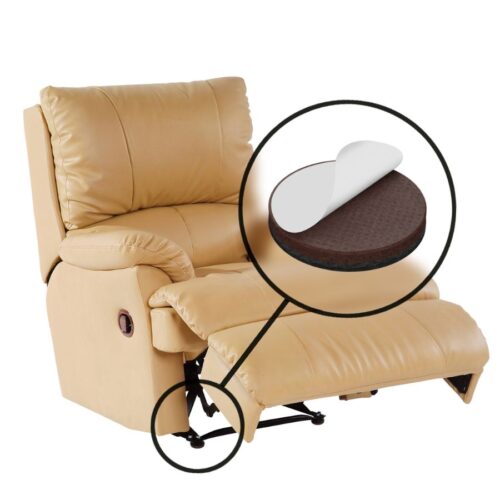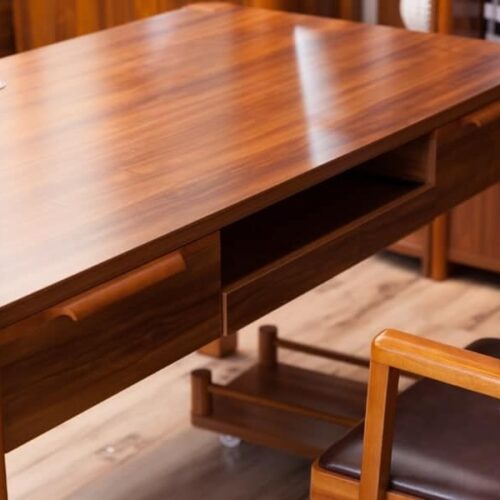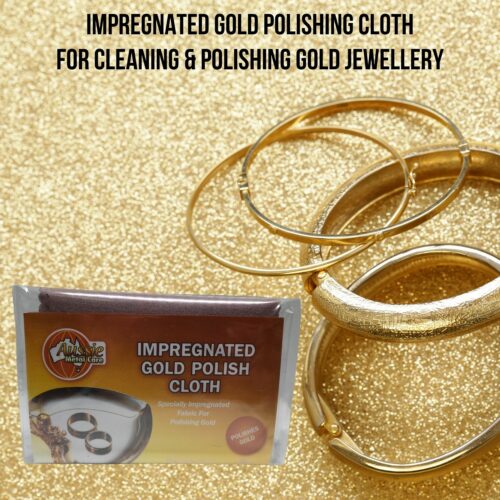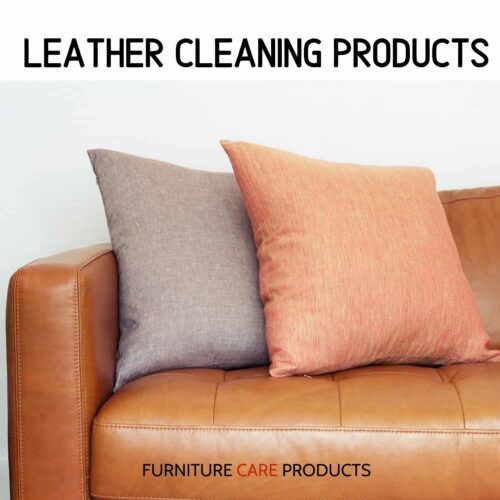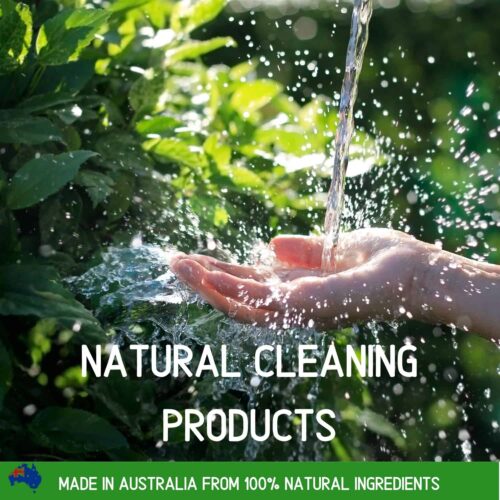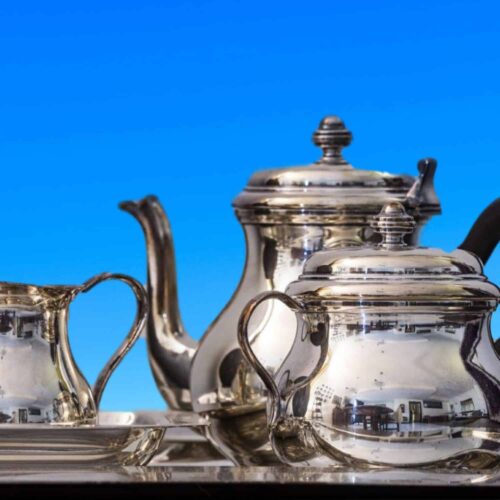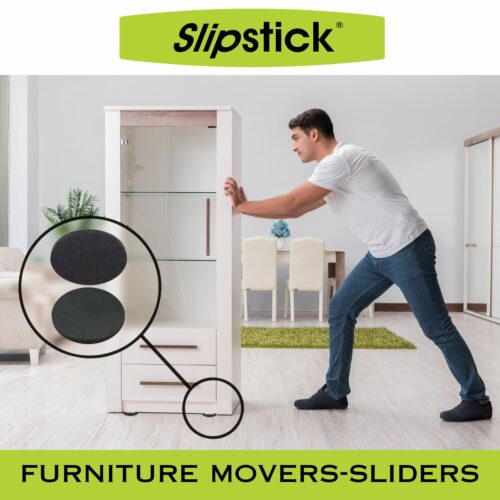Using the wrong products on your leather furniture is like putting diesel fuel in a petrol car – the damage can be catastrophic and expensive.
Yet 80% of Australian households who have leather furniture don’t know what type of leather they own. This isn’t your fault – furniture retailers rarely explain the differences and most leather looks similar to the untrained eye.
Today, that changes. In the next 5 minutes, you’ll learn exactly how to identify your leather type using simple tests you can do right now, understand what products work (and which ones will destroy it), and finally have the confidence to properly care for your investment.
???? Quick Win: Knowing your leather type can save you from a $3,000-$5,000 replacement. One wrong product on aniline leather can cause irreversible damage in minutes.
What You’ll Learn
- Why Leather Type Matters More Than You Think
- The 30-Second Water Drop Test
- The Touch Test: What Your Fingers Tell You
- The Safe Scratch Test
- Aniline Leather (The Premium Problem Child)
- Semi-Aniline (The Goldilocks Choice)
- Pigmented/Protected (The Family Favourite)
- Nubuck & Suede (The Special Cases)
- Bonded Leather (The Imposter)
- Bi-Cast/PU Coated (The Plastic Fantastic)
- Pull-Up Leather (The Shape-Shifter)
- Australian Furniture Brand Guide
- Your Leather Care Cheat Sheet
Why Leather Type Matters More Than You Think
Imagine this scenario: You’ve just bought a beautiful $4,000 leather sofa from Nick Scali. You grab some leather cleaner from Bunnings (seems logical, right?) and give it a good clean. Within hours, you notice dark patches. Within days, the leather feels sticky. Within weeks, it’s ruined.
What happened? You used pigmented leather cleaner on aniline leather – the equivalent of using laundry detergent to wash your hair.
The Cost of Not Knowing:
- Average leather sofa replacement: $3,000-$5,000
- Professional restoration attempt: $800-$1,500
- Success rate of fixing wrong-product damage: <30%
- Time to damage with wrong products: 1-6 months
- Warranty claims rejected for improper care: 65%
The 30-Second Water Drop Test (Your First Clue)
This is the simplest and most reliable test you can do at home. Here’s exactly how:
Step-by-Step Water Test:
- Find a hidden spot: Back of sofa, under cushion, or underneath
- Place ONE small drop of water: Use your finger or dropper
- Start timing immediately
- Observe what happens:
If water absorbs in 1-3 seconds:
✅ You have ANILINE leather (unprotected, premium, needs special care)
If water absorbs in 3-10 seconds:
✅ You have SEMI-ANILINE leather (lightly protected, good quality)
If water beads up and doesn’t absorb:
✅ You have PIGMENTED/PROTECTED leather (fully protected, most common)
If water darkens the leather immediately:
✅ You have NUBUCK or SUEDE (special care required)

The Touch Test: What Your Fingers Tell You
Your fingers are surprisingly good leather detectives. Here’s what to feel for:
| What You Feel | What It Means | Leather Type |
|---|---|---|
| Soft, warm, natural grain visible | No protective coating | Aniline |
| Soft but slightly cooler, some grain | Light protection | Semi-Aniline |
| Cooler, consistent texture, uniform | Heavy coating | Pigmented |
| Velvety, fuzzy, warm | Buffed surface | Nubuck/Suede |
| Plastic-like, very cold, stiff | Synthetic coating | Bi-Cast/PU |
| Changes colour when stretched | Oil-infused | Pull-Up |
???????? Pro Tip: Compare the temperature of your leather to a piece of paper. Aniline leather feels almost the same temperature (it breathes), while pigmented leather feels noticeably cooler (the coating blocks heat transfer).
The Safe Scratch Test (When Done Right)
⚠️ Important: This test should be done VERY gently in a completely hidden area.
- Find a spot under the sofa or back corner
- LIGHTLY scratch with your fingernail
- Observe what happens:
Scratch Test Results:
- Scratch disappears when rubbed: Pull-up leather (oils heal scratches)
- Scratch shows lighter colour underneath: Aniline or semi-aniline
- No mark at all: Pigmented leather (protected surface)
- Surface lifts or peels: Bonded or bi-cast leather (run away!)
- Leaves a permanent mark: Nubuck or suede
Aniline Leather: The Premium Problem Child
What It Is:
The most expensive, highest quality leather. It’s dyed all the way through with no protective coating, showing every natural mark and grain pattern. Think of it as the cashmere of leather.
How to Identify:
- Water absorbs instantly (1-3 seconds)
- Feels warm and buttery soft
- Shows natural marks, scars, grain
- Scratches easily but “heals” with rubbing
- Develops patina over time
Common Brands Using It:
- King Furniture (premium lines)
- Natuzzi (Italian imports)
- Some Nick Scali premium
- Berkowitz (top tier)
Australian Climate Challenges:
- Absorbs humidity (mould risk in QLD)
- Fades quickly in Perth sun
- Shows water marks easily
- Stains are usually permanent
⚠️ Critical Care Points for Aniline:
- NEVER use: Water-based cleaners, baby wipes, all-purpose cleaners
- NEVER: Let it get wet (water stains are permanent)
- ALWAYS use: Specialized aniline cleaners only
- Conditioning: Every 2-3 months with aniline-specific conditioner
- Professional cleaning: Often the only safe option
Semi-Aniline: The Goldilocks Choice
Semi-aniline offers the best of both worlds – natural beauty with some protection.
Characteristics:
- Water absorbs slowly (3-10 seconds)
- Slight protective coating
- Natural grain still visible
- Softer than pigmented
- More stain resistant than aniline
Perfect For:
- Families without young children
- Quality-conscious buyers
- Those wanting natural look
- Moderate-use areas
Care Requirements:
- Clean every 3-4 months
- Condition every 3 months
- Can handle gentle water cleaning
- Most stains removable if caught quickly
Price Point:
- 20-30% less than aniline
- 50% more than pigmented
- Good value for quality
Pigmented/Protected Leather: The Family Favourite
This is what 70% of Australian homes have – and for good reason.
Why It’s Popular:
Pros:
- ✅ Kid-friendly
- ✅ Pet-resistant
- ✅ Easy to clean
- ✅ Stain resistant
- ✅ Affordable
- ✅ Consistent colour
- ✅ UV resistant
Cons:
- ❌ Less natural feel
- ❌ Doesn’t develop patina
- ❌ Can feel cold
- ❌ Less breathable
- ❌ Shows scratches more
Identification:
- Water beads on surface
- Uniform colour and texture
- Feels cooler to touch
- Embossed grain pattern
- Scratches don’t self-heal
Care Instructions:
- Clean monthly with damp cloth
- Deep clean quarterly
- Condition every 4-6 months
- Most household spills wipe off easily
- Can use general leather cleaners
Nubuck & Suede: The Special Cases
⚠️ Special Care Alert: If you have nubuck or suede, stop using ANY liquid cleaners immediately. These leathers require completely different care.
What Makes Them Different:
- Buffed surface creates velvety texture
- No protective coating whatsoever
- Extremely absorbent
- Water causes permanent staining
- Requires specialized tools
Identification:
- Fuzzy, velvety feel
- Water darkens immediately
- Changes colour when brushed
- No shine or gloss
- Marks easily with fingernails
Nubuck/Suede Care Essentials:
- Daily: Brush with nubuck brush (one direction)
- Weekly: Vacuum with soft brush attachment
- Stains: Nubuck eraser or specialist cleaner
- Protection: Nubuck protector spray monthly
- NEVER: Use water, leather cleaner, or conditioner
Bonded Leather: The Imposter
Here’s the truth furniture stores don’t tell you: Bonded leather is only 10-20% real leather.
What It Really Is:
Leather scraps ground up, mixed with polyurethane, and pressed onto fabric backing. It’s essentially particle board but for leather.
How to Spot Bonded Leather:
- Feels thin and papery
- Peels or flakes over time
- Consistent, printed texture
- Backing is fabric (check underneath)
- Suspiciously cheap price
- Often labeled as “leather” without qualifiers
The Harsh Reality:
- Lifespan: 2-5 years maximum
- Cannot be repaired when peeling starts
- Not worth professional cleaning
- Common in furniture under $1,000
If You Have Bonded Leather:
- Keep it dry at all costs
- Use leather protector to delay peeling
- Don’t over-condition (makes peeling worse)
- Start saving for replacement
- Consider it temporary furniture
Bi-Cast/PU Coated: The Plastic Fantastic
Bi-cast has a split leather base with a thick polyurethane coating. It’s leather’s attempt at being vinyl.
Identification:
- Very shiny, plastic appearance
- Cold to touch, doesn’t warm up
- No natural grain visible
- Water beads and runs off
- Feels synthetic
Care Requirements:
- Wipe with damp cloth only
- No leather conditioners (won’t absorb)
- Mild soap for tough stains
- Keep away from heat (coating melts)
- Cannot be repaired if coating cracks
Pull-Up Leather: The Shape-Shifter
Pull-up leather is infused with oils and waxes, creating a unique distressed look that changes with use.
The Pull-Up Test:
- Stretch a small area gently
- Watch for colour to lighten
- Release the stretch
- Colour returns to normal = Pull-up leather
Characteristics:
- Scratches “disappear” with rubbing
- Develops unique patina
- Colour variation is normal
- Feels waxy or oily
- Water beads initially then absorbs slowly
Care Instructions:
- Minimal cleaning needed
- Buff out scratches with fingers
- Oil-based conditioners only
- Embrace the patina development
- Perfect for vintage/industrial style
Australian Furniture Brand Leather Guide
Here’s what major Australian retailers typically sell:
| Brand | Common Leather Types | Price Range | Care Level |
|---|---|---|---|
| King Furniture | Aniline, Semi-aniline, Premium pigmented | $3,000-$8,000 | High |
| Nick Scali | Semi-aniline, Pigmented, Some aniline | $2,000-$5,000 | Medium |
| Freedom | Pigmented, Some semi-aniline | $1,500-$4,000 | Low-Medium |
| Harvey Norman | Pigmented, Bonded, Bi-cast | $800-$3,000 | Low |
| Plush | Pigmented, Semi-aniline | $2,000-$4,500 | Medium |
| Berkowitz | Aniline, Semi-aniline, Pull-up | $4,000-$10,000 | High |
| Moran | Semi-aniline, Pigmented | $2,500-$5,000 | Medium |
| Fantastic Furniture | Bonded, Bi-cast, Budget pigmented | $500-$1,500 | Low |
| IKEA | Pigmented, Some aniline | $800-$2,500 | Low-Medium |
| Focus on Furniture | Pigmented, Bonded | $1,000-$2,500 | Low |
???? Note: These are general guidelines. Always test your specific furniture as brands may use different leather types across their ranges.
Your Leather Care Cheat Sheet
Quick Care Reference by Leather Type:
???? Aniline Leather:
- Clean: Specialist aniline cleaner only
- Condition: Every 2-3 months
- Protect: Keep dry, away from sun
???? Semi-Aniline:
- Clean: Gentle leather cleaner
- Condition: Every 3 months
- Protect: Regular care prevents most issues
???? Pigmented:
- Clean: Any quality leather cleaner
- Condition: Every 4-6 months
- Protect: Very resilient
- Products: Standard leather care products
???? Nubuck/Suede:
- Clean: Dry brush and eraser only
- Condition: Never – use protector spray
- Protect: Monthly spray application
- Products: Specialized nubuck kit required
⬛ Bonded/Bi-cast:
- Clean: Damp cloth only
- Condition: Light application if any
- Protect: Minimal intervention best
Still Not Sure? Your Decision Tree:
- Did water absorb?
- Yes, instantly → Aniline
- Yes, slowly → Semi-aniline
- No → Continue to 2
- Does it feel fuzzy/velvety?
- Yes → Nubuck/Suede
- No → Continue to 3
- Does it feel like plastic?
- Yes → Bi-cast/PU coated
- No → Continue to 4
- Does it change colour when stretched?
- Yes → Pull-up leather
- No → Pigmented leather
???? Take Action Now
Every day with the wrong care routine is damaging your leather. Now that you know your leather type, get the right products.
Download Your Free Leather Identifier Card →
Recommended Products by Leather Type
For Aniline & Semi-Aniline:
We do not carry products for this type of leather use: Leather Finishing Products
- pH-balanced cleaner
- Deep conditioning cream
- Application cloths
- Australian climate formulated
For Pigmented Leather:
- All-purpose leather cleaner
- Protective conditioner
- Perfect for families
- 6-month supply
From: $29.95
Expert Tips from 30 Years in the Business
- When in doubt, test first: Always test products in hidden areas
- Less is more: Over-treating causes more problems than under-treating
- Document everything: Keep receipts and care records for warranty
- Seasonal adjustments: Brisbane needs less conditioning than Melbourne
- Professional help: Some things are worth paying for (aniline stains)
- Prevention beats cure: Proper identification prevents 90% of damage
???? Critical Warnings
- NEVER guess: Wrong products cause irreversible damage
- NEVER mix products: Chemical reactions can destroy leather
- NEVER use household cleaners: Even “gentle” ones damage leather
- NEVER ignore manufacturer guidelines: Voids warranty instantly
- NEVER delay treatment: Stains set permanently within hours
Further Reading
- Removing Mould from Different Leather Types
- Caring for Australian Leather
- 15 Leather Care Myths Destroying Your Furniture
Frequently Asked Questions
How can I tell if my leather is real or fake?
Real leather feels warm to touch, has natural grain variations, and absorbs water (except heavily coated types). Fake leather feels cold, has perfect uniform patterns, and water always beads on the surface. Check the backing – real leather has suede-like backing, fake has fabric.
What’s the most common leather type in Australian homes?
Pigmented/protected leather makes up about 70% of Australian leather furniture. It’s popular because it handles our climate well, resists stains, and works for families with kids and pets.
Can I use the same products on all leather types?
Absolutely not. Using pigmented leather cleaner on aniline leather can cause permanent damage within minutes. Always identify your leather type first and use appropriate products.
Why does my leather feel sticky?
Sticky leather usually means product buildup from over-conditioning or using wrong products (like baby wipes). It can also indicate the protective coating is breaking down. Clean with appropriate leather cleaner and reduce conditioning frequency.
How often should I condition leather in Queensland’s humidity?
In Queensland’s humid climate, condition every 4-6 months for pigmented leather, 3-4 months for semi-aniline. The humidity provides natural moisture, so over-conditioning causes stickiness and mould.
Is expensive leather always aniline?
Not necessarily. While aniline is typically the most expensive, high-end furniture might use semi-aniline or even premium pigmented leather for durability. Price indicates quality but doesn’t determine leather type.
Can I change my leather type with treatments?
No. You cannot convert one leather type to another. Applying heavy protectants to aniline doesn’t make it pigmented – it just damages the aniline leather.
What if I have two different leather types on one sofa?
This is common with leather/vinyl combinations. Test each section separately. The sides and back might be vinyl (bi-cast) while seating areas are real leather. Treat each according to its type.
Don’t Risk Your Investment
Your leather furniture cost thousands. The wrong cleaner costs $10.
The damage? Permanent.
Now that you know your leather type, protect it properly.
Shop Leather Care
→Get Free ID Card →
Related Products
-
Aegis Leather Protector 250ml Bottle
$34.95 Inc GST -
Aussie Furniture Care Leather Care Cleaning Kit With Leather Cleaner-Leather Conditioner-Cloths-Brush
$74.95Original price was: $74.95.$69.95Current price is: $69.95. Inc GST -
Aussie Furniture Care Leather Cleaner & Leather Conditioner Combo
$61.95Original price was: $61.95.$57.00Current price is: $57.00. Inc GST -
Aussie Furniture Care Leather Cleaner 500ml
$31.95 Inc GST
